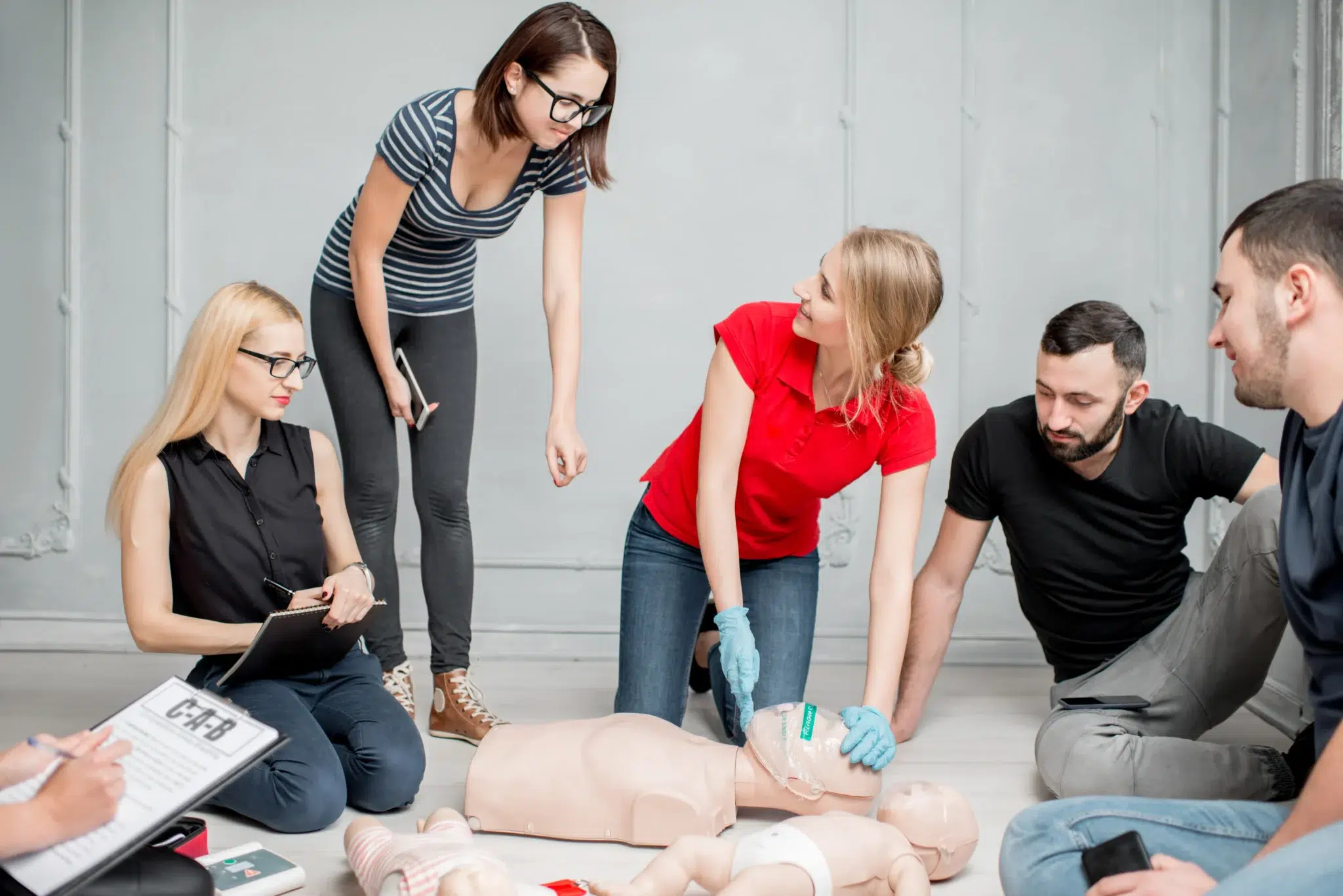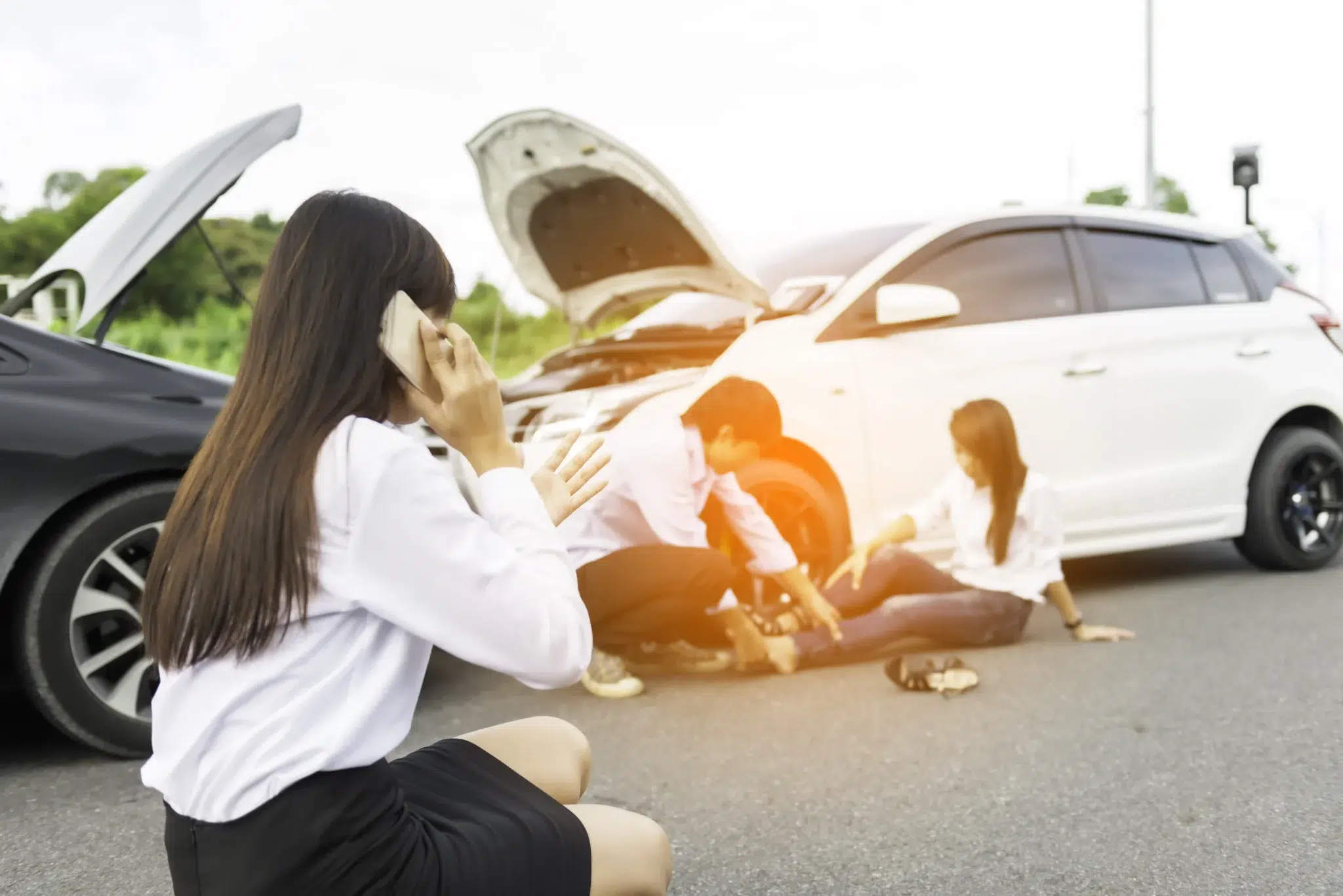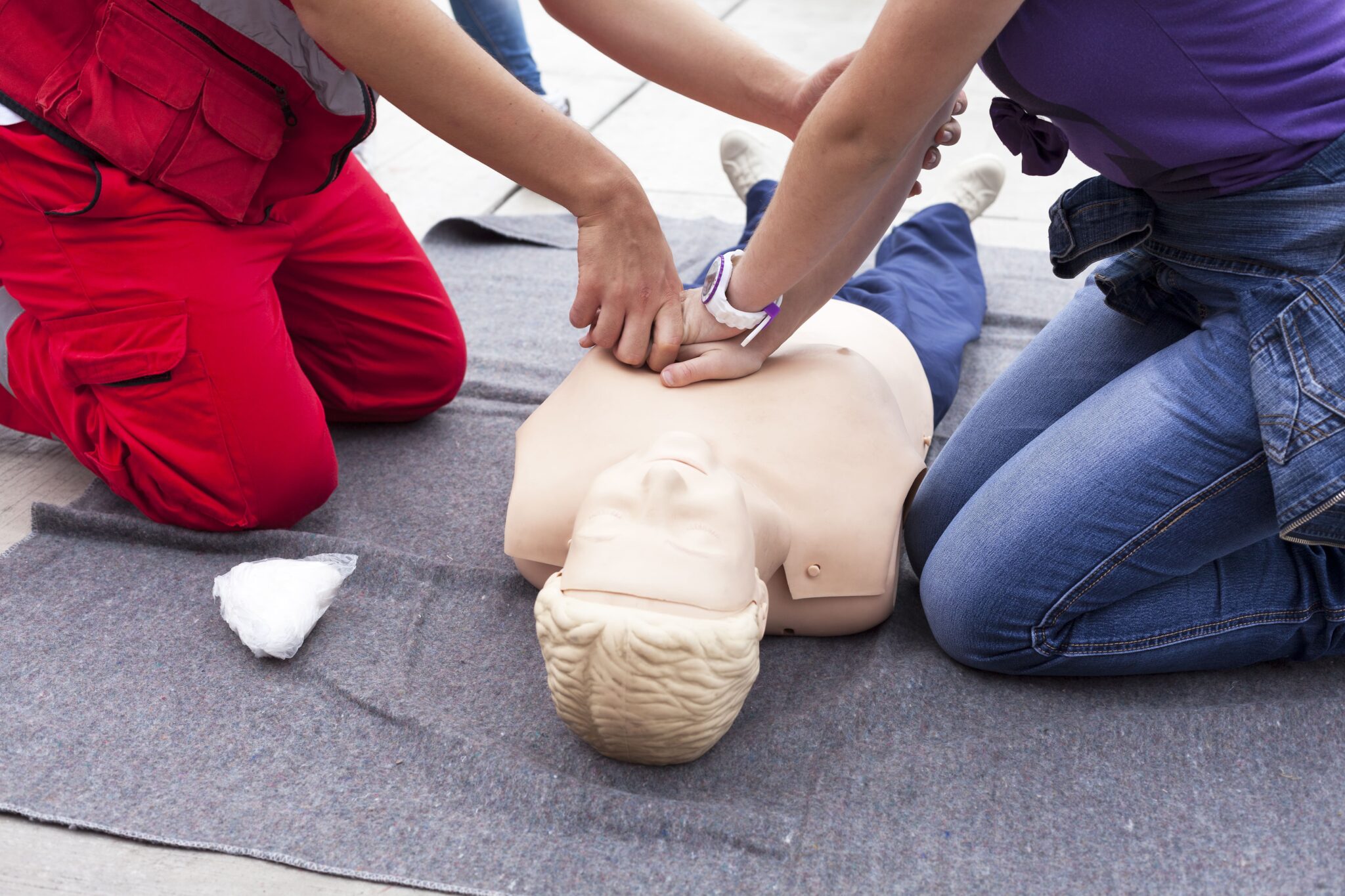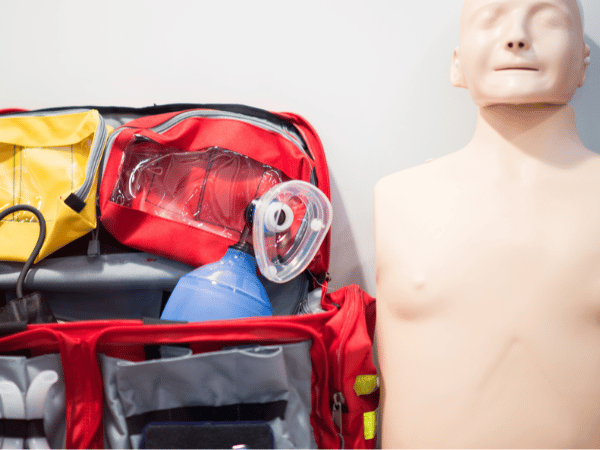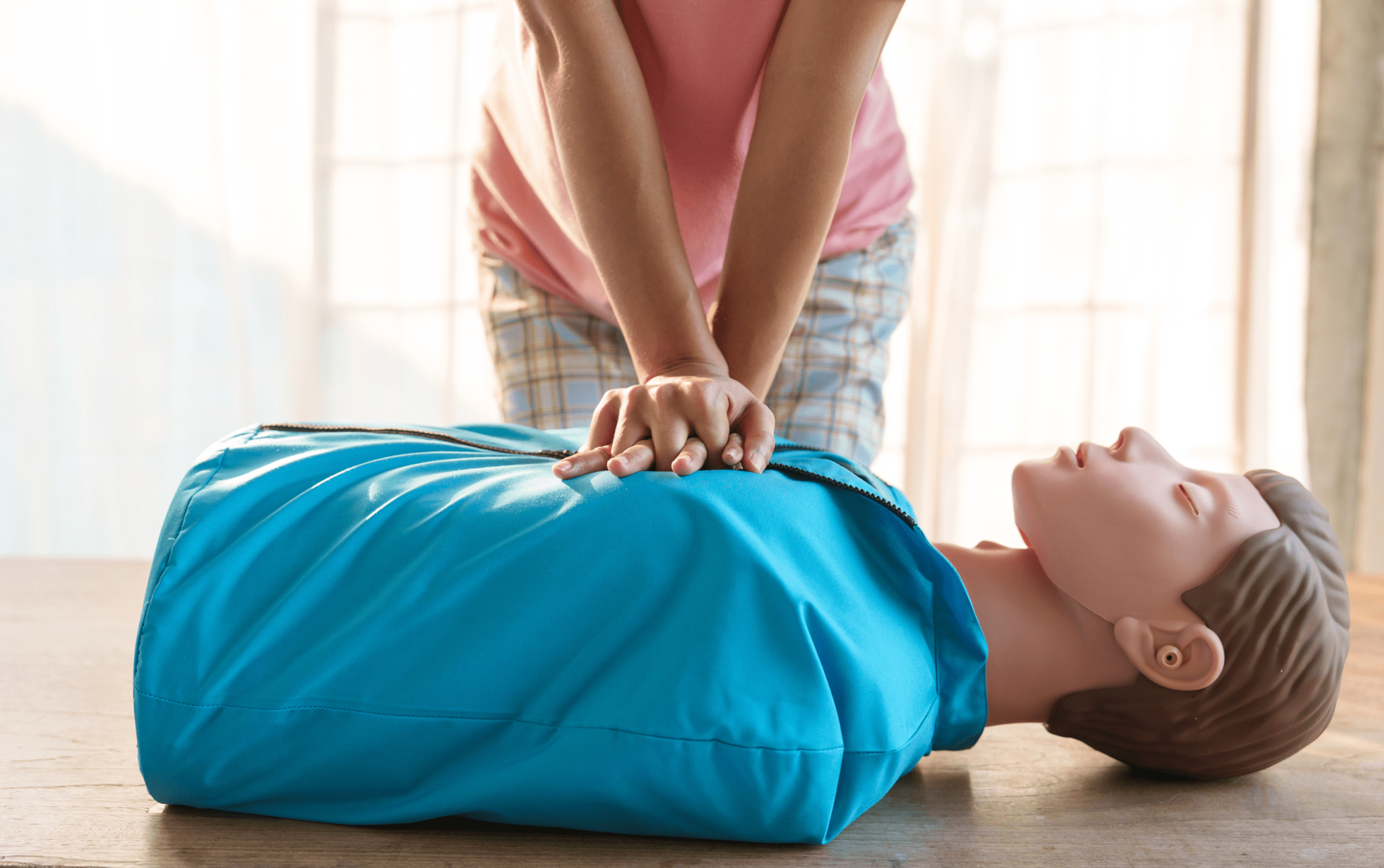Ready to take the next step in your healthcare career or simply empower yourself with life-saving skills? A BLS (Basic Life Support) certification is more than just a credential—it’s a testament to your ability to handle critical situations and provide essential care during emergencies. Whether you’re a seasoned healthcare professional, a student entering the field, or someone who wants to be prepared for anything, understanding the value of BLS and finding the right course is paramount. This comprehensive guide breaks down everything you need to know about BLS certification, from understanding its importance to finding “BLS classes near me.” We’ll explore the different types of BLS classes, the skills you’ll gain, how to choose the right course, and how to maintain your certification for continued career growth. Let’s get started!
Key Takeaways
- BLS Certification Goes Beyond CPR: It’s a crucial skill set for healthcare providers, encompassing advanced techniques for handling life-threatening emergencies. Look for AHA-certified courses like those offered at Safety Training Seminars.
- Choose a BLS Class That Works for You: Consider factors like in-person vs. online formats, instructor experience, and the inclusion of hands-on training. Safety Training Seminars offers a range of options to suit different learning styles.
- Stay Current to Provide the Best Care: Maintaining your BLS certification involves regular practice, continuing education, and timely recertification. This keeps your skills sharp and demonstrates your commitment to patient safety.
What is BLS?
Definition and Importance
BLS stands for Basic Life Support. It’s a critical healthcare certification that goes beyond standard CPR. BLS certification equips healthcare professionals and first responders with the skills to handle life-threatening emergencies, including cardiac arrest, respiratory distress, and airway obstructions. It builds upon the foundational skills of CPR, adding advanced techniques and a deeper understanding of patient assessment. Think of it as the next level of lifesaving care. BLS training at Safety Training Seminars emphasizes early recognition and intervention, providing crucial support until more advanced medical help arrives. This quick action can significantly improve patient outcomes and increase the chances of survival. Our BLS certification courses in San Francisco cover these essential skills.
Who Needs BLS Certification?
BLS certification is often a prerequisite for many healthcare roles. It’s designed for professionals like doctors, nurses, paramedics, EMTs, and other healthcare providers regularly involved in patient care. Many healthcare employers require their staff to maintain a current BLS certification to ensure they can respond effectively in emergencies. Even if it’s not strictly required for your specific job, having a BLS certification demonstrates your commitment to patient safety and can enhance your professional credentials. If you’re considering a career in healthcare, obtaining BLS certification is a smart move. It’s a valuable asset that can open doors to more opportunities and give you the confidence to handle critical situations. Safety Training Seminars offers BLS classes in San Francisco and surrounding areas, including Daly City, San Mateo, and Oakland.
BLS Class Types
Whether you’re a healthcare professional, a student, or someone who wants to be prepared for emergencies, understanding the different BLS class types can help you find the right fit. Let’s break down the options:
Basic Certification
The Basic Life Support (BLS) certification course provides the foundational knowledge and skills to respond to life-threatening emergencies. You’ll learn how to perform CPR, use an AED, and relieve choking. This BLS certification covers essential techniques for adults, children, and infants. Safety Training Seminars offers these courses in San Francisco, making it easy to find a class that works for your schedule. We also offer a low price guarantee.
Renewing Your Certification
BLS certifications are typically valid for two years. If your certification is expiring, you’ll need to take a recertification course to stay up-to-date with the latest guidelines and techniques from the American Heart Association. Safety Training Seminars offers convenient recertification options in San Francisco. Don’t wait until the last minute—sign up for your recertification course a few months in advance to avoid any lapse in your credentials.
Becoming a BLS Instructor
If you’re passionate about BLS and want to share your knowledge, consider becoming a certified instructor. Instructor courses prepare you to teach BLS to others, empowering them to respond effectively in emergencies. This path opens up opportunities to educate healthcare providers, community members, and future lifesavers. Check with organizations like the American Heart Association or the American Red Cross for information on BLS instructor programs. You can also find information on becoming an AHA BLS Instructor through our RQI classes.
Choosing the Right BLS Class
So, you’re ready to sign up for a BLS class? Great! Choosing the right class is an important step, so let’s cover what to look for. A good program will give you the skills and confidence to handle emergencies effectively.
Accreditation and Certification Standards
First things first, make sure the program you choose is accredited by a recognized organization. The American Heart Association (AHA) sets the gold standard for BLS certification, and many employers require AHA-approved certifications. This ensures you’re learning the most up-to-date and evidence-based practices. Safety Training Seminars offers AHA-certified BLS training, giving you the high-quality instruction you need.
Instructor Qualifications
The instructor’s expertise plays a huge role in your learning experience. Look for certified instructors with real-world experience. Their practical insights can make a big difference in how well you grasp the material and apply it in real-life situations. At Safety Training Seminars, our instructors are not only certified but also seasoned professionals.
Class Formats
BLS classes are offered in several formats, from traditional in-person classes to blended learning options that combine online modules with hands-on skills sessions. This flexibility lets you choose the format that best suits your schedule and learning style. Check out our website to explore the different BLS class formats we offer at Safety Training Seminars.
Hands-on Training
While online components can be helpful, hands-on training is essential for mastering BLS skills. There’s no substitute for practicing techniques like CPR and using an AED on mannequins in a controlled environment. This practical experience builds muscle memory and confidence, preparing you to respond effectively in a real emergency. Our BLS classes prioritize hands-on training to ensure you’re fully prepared. For the best value, we also offer a low price guarantee.
How Much Do BLS Classes Cost?
So, you’re ready to get your BLS certification—fantastic! Naturally, one of your first questions might be about the cost. Like most things, BLS class prices aren’t one-size-fits-all. Let’s break down the factors that influence pricing and what you can generally expect.
Average Price Range
BLS certification classes typically range from around $50 to $90. For example, some providers in Brooklyn offer BLS training for about $75. In Los Angeles, in-person BLS certification through the American Heart Association is around $55, with online certification costing a bit more. Remember, these are just examples, and prices can vary based on location and other factors. Safety Training Seminars offers competitive pricing on all our courses, including our BLS certification, and we encourage you to compare prices in your area.
Factors Affecting Cost
Several things can influence how much a BLS class costs. First, consider whether you’re looking for initial certification, recertification, or an online course. These options often come with different price tags. Recertification courses are usually less expensive than initial certification. Online courses, while convenient, can sometimes be priced higher because of the technology involved. Also, high-demand periods could mean slightly higher prices, so booking in advance or during off-peak times might save you money. Finally, your location plays a role. Larger cities or areas with higher living expenses might have slightly higher course fees.
Discounts and Promotions
Before you commit to a class, look for potential discounts. Some providers offer promotions like free shipping on study materials or discounted rates for group registrations. Check if your employer, professional organization, or school has a partnership with a training center for reduced fees. It never hurts to ask! At Safety Training Seminars, we have a low price guarantee, so you can feel confident you’re getting quality training at a fair price.
Getting BLS Certified
Getting your BLS certification or recertification is straightforward. Understanding the process and requirements will help you feel prepared and confident. Let’s break down the key elements: course components, the skills assessment, and how long your certification remains valid.
Course Components
BLS courses typically combine online learning with in-person skills practice and assessment. You’ll start with online modules covering essential concepts like adult, child, and infant CPR, recognizing and responding to life-threatening emergencies, and using an AED. These online modules offer flexibility, allowing you to learn at your own pace. The curriculum for our BLS certification courses is based on the latest AHA guidelines, ensuring you receive up-to-date training. Instructor-led courses are also available, providing a more traditional classroom setting. At Safety Training Seminars, we offer a variety of course formats to fit your learning style and schedule.
Skills Assessment
After completing the online portion, you’ll participate in a hands-on skills assessment session. This crucial step allows you to demonstrate your proficiency in the techniques learned online. A certified instructor will guide you through various scenarios, evaluating your ability to perform CPR, use an AED, and provide other life-saving interventions. This in-person component ensures you can confidently apply your knowledge in real-world situations. Our instructors provide personalized feedback and support to help you master these essential skills.
Certification Validity and Renewal
BLS certifications are typically valid for two years. To maintain your credentials and stay up-to-date with the latest guidelines, you’ll need to complete a recertification course before your current certification expires. Plan to take a BLS recertification course within 30 days of the expiration date to avoid any gaps in your certification. Recertification courses often cover updated protocols and techniques, ensuring you continue to provide high-quality care. We offer convenient recertification options to help you maintain your BLS certification seamlessly.
Online vs. In-Person BLS Classes
Deciding between online and in-person BLS training? Both have their pros and cons, and understanding the differences can help you choose the best fit for your learning style and schedule. Let’s break down the options:
Pros and Cons of Online Training
While online learning offers flexibility, the American Heart Association (AHA) requires an in-person skills assessment component for BLS certification. There’s no fully online, AHA-certified BLS course. You can complete the cognitive portion online, which allows you to learn at your own pace. However, some students find the online portion challenging. Some have reported issues with the online interface and interactive scenarios. So, while convenient, online training isn’t a complete solution for BLS certification.
Benefits of In-Person Classes
In-person BLS classes provide a hands-on learning experience crucial for mastering essential skills. You’ll receive real-time feedback from certified instructors, practice on mannequins, and learn in a collaborative environment. This direct interaction helps build confidence and ensures you’re fully prepared for real-life emergencies. Organizations like Safety Training Seminars offer in-person BLS training that follows the latest AHA guidelines. This ensures you’re learning up-to-date techniques and best practices.
Hybrid Options
Looking for a blend of flexibility and hands-on learning? Hybrid courses combine online coursework with in-person skills sessions. The American Red Cross, for example, offers a blended learning experience that lets you complete the cognitive portion online before attending an in-person skills session. This format offers a good balance for those who prefer a more flexible schedule while still benefiting from direct instruction and practice. It allows you to tailor your learning experience to your specific needs and preferences.
Find BLS Classes Near You
Now that you understand the importance of BLS certification and the different types of classes available, let’s explore how to find a course that fits your needs and location. Several convenient options exist, from established training organizations to local community centers.
Local Training Centers
Dedicated training centers often offer a wide range of BLS courses, frequently with flexible schedules. These centers specialize in providing certification courses and often feature experienced instructors, up-to-date materials, and a focused learning environment. A quick online search for “BLS classes near me” can uncover local options. For example, RC Health Services offers BLS certification in Charlotte, NC, providing a convenient option for those in the area.
Healthcare Facilities
Many hospitals and healthcare systems offer BLS training for their employees and often open these courses to the public. Check with hospitals and clinics in your area to see if they offer BLS certification courses. This can be a great way to learn from experienced professionals in a real-world medical setting. As All Hearts CPR points out, regular BLS training is crucial for healthcare professionals to stay current on life-saving techniques.
Community Organizations
Community centers, YMCA branches, and even some fire departments offer BLS classes, often at a lower cost than specialized training centers. The Red Cross, for instance, provides various BLS certification options in communities across the country, including in-person and blended learning formats. These community-based courses make BLS training accessible to a wider audience.
Popular BLS Class Providers
Several nationally recognized organizations provide standardized BLS training programs. Here are a few:
American Heart Association (AHA)
The AHA is a leading authority on cardiovascular health and emergency care. They offer a widely recognized BLS for Healthcare Providers course covering essential life-saving skills. Health Force Training Center offers a helpful guide to AHA BLS if you’d like to learn more. Safety Training Seminars is proud to offer AHA BLS certification in San Francisco.
American Red Cross
The American Red Cross is a well-known humanitarian organization providing a range of safety and health courses, including BLS certification. Their courses are developed with input from the Red Cross Scientific Advisory Council, ensuring they reflect current best practices. You can explore BLS certification options on their website.
National CPR Foundation
The National CPR Foundation offers various CPR and BLS courses designed for both healthcare professionals and the general public. Their website provides information on their certification programs.
ProTrainings
ProTrainings offers a flexible blend of online and in-person BLS training options, making it convenient for learners with busy schedules. Their website details the various courses and formats available.
Health & Safety Institute (HSI)
HSI provides comprehensive training programs for BLS, CPR, and first aid, emphasizing practical skills. You can find more information about their BLS training on their website.
Safety Training Seminars
Safety Training Seminars offers high-quality, affordable BLS certification courses in San Francisco, emphasizing hands-on training. We are committed to providing comprehensive instruction that prepares participants to respond effectively in emergencies. Check out our BLS certification page for more details.
Prepare for Your BLS Class
What to Expect
Getting ready for your BLS class? You’ll dive into a mix of interactive learning and hands-on practice. Expect to cover essential life-saving skills like CPR, recognizing and responding to life-threatening emergencies, using an AED, and providing relief from choking. The curriculum emphasizes critical thinking and teamwork, key elements of effective emergency response. For a closer look at what’s involved, the American Heart Association offers a detailed overview of BLS course content. You’ll learn how to assess a patient’s condition quickly and accurately, perform chest compressions and rescue breaths, and work effectively as part of a team.
Required Materials and Equipment
Most in-person BLS courses provide the necessary equipment, like mannequins and AED trainers, for practice during class. You’ll likely need a student handbook, which covers the course material. This serves as a valuable reference after you’ve earned your certification. Some providers may offer online resources in addition to—or instead of—a physical textbook. Safety Training Seminars clearly outlines any required materials for their courses. It’s always a good idea to double-check with your chosen training center for their specific requirements. This way, you’ll arrive prepared and ready to learn.
Study Strategies
While BLS courses are designed to be comprehensive, preparing beforehand can maximize your learning. Familiarize yourself with basic medical terminology and review any pre-course materials your instructor provides. Regular practice is essential for mastering BLS skills, so take advantage of online resources and practice scenarios. Medicus Training offers helpful tips for mastering these techniques. Consistent review after your class will help you maintain proficiency and confidence in your abilities. This ongoing practice ensures you’re always ready to respond effectively in an emergency.
Maintain Your BLS Certification
Once you’ve earned your BLS certification, staying up-to-date is key. Regularly refreshing your skills and knowledge ensures you’re always prepared to provide effective, high-quality care. Here’s how to maintain your BLS certification and advance your career:
Skill Retention
Hands-on practice is crucial for retaining BLS skills. Think of it like any other skill—the more you use it, the better you become. Regularly practicing core techniques like CPR and using an AED keeps your responses sharp and effective in real-world emergencies. Consider joining refresher courses or participating in mock scenarios to reinforce your training. Medicus Training offers valuable resources and insights into mastering essential BLS skills. This regular practice helps solidify your muscle memory and ensures you can perform these life-saving techniques confidently under pressure.
Continuing Education
The medical field is constantly evolving, so ongoing education is essential for any healthcare professional. Continuing education courses help you stay informed about the latest guidelines, techniques, and advancements in emergency medical care. This commitment to lifelong learning not only maintains your BLS certification but also demonstrates your dedication to providing the best possible patient care. All Hearts CPR emphasizes the importance of BLS training for healthcare providers. Staying current with evolving standards ensures you’re prepared to handle any emergency situation confidently. Look for opportunities to expand your knowledge through workshops, online courses, and conferences.
Career Advancement with BLS
A BLS certification is a valuable asset for career growth in healthcare. It demonstrates your commitment to patient safety and your ability to respond effectively in critical situations. Many healthcare roles require BLS certification as a prerequisite, and maintaining your certification can open doors to new opportunities and career advancement. Health Force Training Center provides a comprehensive guide to AHA BLS for healthcare providers, highlighting its importance for career progression. For healthcare professionals in San Francisco, Safety Training Seminars offers a range of AHA-certified courses, including BLS, ACLS, and PALS, to help you maintain your skills and advance your career. Investing in your BLS certification is an investment in your future.
Finding a nearby, certified training center can make all the difference when it comes to staying current with life-saving skills. Locations offering BLS CPR Classes in Newark and BLS CPR Classes in Sacramento provide accessible, AHA-approved instruction to help individuals and professionals stay prepared for real-world emergencies.
Frequently Asked Questions
How long is a BLS certification valid? BLS certifications are typically valid for two years. You’ll need to take a recertification course before your current certification expires to stay current with the latest guidelines.
What’s the difference between BLS and CPR? BLS (Basic Life Support) builds upon the foundation of CPR (Cardiopulmonary Resuscitation). CPR focuses primarily on chest compressions and rescue breaths, while BLS encompasses a broader range of skills, including using an AED, relieving choking, and understanding team dynamics during emergencies. It provides a more comprehensive approach to patient care.
Is online BLS certification accepted? While you can complete the cognitive portion of BLS training online, the American Heart Association requires an in-person skills assessment for certification. There’s no fully online option for obtaining an AHA-certified BLS credential.
Where can I find BLS classes near me? You can find BLS classes through various avenues, including local training centers, hospitals, community organizations (like the YMCA or Red Cross), and nationally recognized providers such as the American Heart Association and the American Red Cross. An online search for “BLS classes near me” is a great starting point. Safety Training Seminars offers BLS classes in San Francisco and the surrounding areas.
What if my BLS certification is about to expire? If your BLS certification is nearing its expiration date, you’ll need to enroll in a recertification course. These courses are designed to refresh your knowledge and skills, ensuring you remain up-to-date with the latest guidelines. It’s best to sign up for recertification a few months before your current certification expires to avoid any lapse in your credentials.


